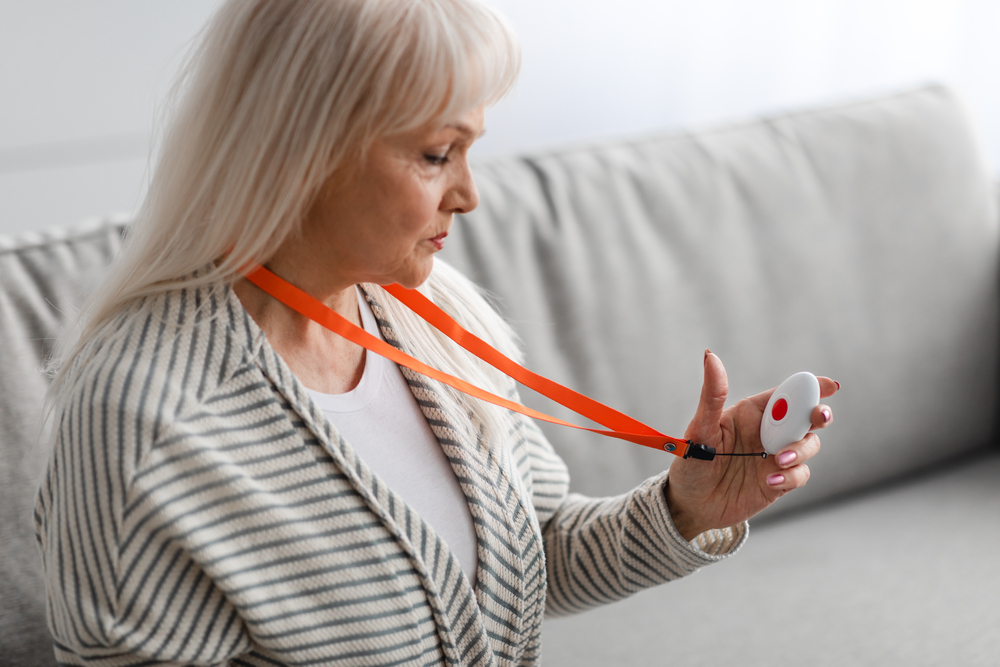Factors in Choosing Ideal Medical Alert System
If you or a senior loved one you care about is considering the potential need for a medical alert device system, you have several quality options to choose from. Senior needs vary significantly, and as such, manufacturers of such medical alert devices have created a few different templates that allow for varying uses and benefits.
At Stay Safe Alert, we're happy to offer several styles of medical alert system to our clients, including both landline and cellular devices, necklace options, bracelet options and more. Not only this, but we'll work with seniors and their caregivers to find the ideal product that works for their needs. What are the basic steps to follow when identifying the proper medical alert system? Here's a rundown.
Assess Basic Needs
First and foremost, the basic needs of the senior or patient in question must be considered. While most medical alert systems are designed to serve as a panic button, where pressing them triggers assistance in one of several ways, there are notable differences in the way they operate and the kinds of triggers that are utilized.
For these, patients and caregivers need to think about their most common needs. Do you need a regular wearable that can be worn at all times and contact emergency services if help is needed, or would a stationary panic button work better for you? If so, a necklace or bracelet option with a pendant or button may be the best choice.
Do you need help around the clock, or just during certain hours? A medical alert system with round-the-clock monitoring service is likely a better fit than one without it.
There are also systems that activate via other methods, such as by voice or by pulling on a cord. There may be several situations where this is actually the ideal solution - for example, if the senior only needs help when taking a bath but doesn't want to wear a device all day.
Consider Lifestyle and Mobility Needs
After assessing basic needs, it's important to consider lifestyle and mobility needs as well. This is especially important for seniors who still lead active lifestyles.
For example, if you're an active senior who enjoys spending time outdoors, a medical alert system that needs to be tethered to a landline may not be the best option - a cellular device would be more suitable. If you're someone who has trouble getting around, on the other hand, a wearable device with GPS tracking could be ideal.
Assess Possible Risks or Dangers
Also vital during this process will be evaluating the potential risks or dangers present to the patient on a daily basis -- and being as realistic as possible about these. For instance, has the senior in question experienced multiple falls lately, and as such might need medical assistance in the event of another? If so, a lanyard with medical alert device like Stay Safe Alert's or one that can be mounted on a wall would likely be more beneficial.
On the other hand, some people use medical alert devices for specific conditions, such as heart disease. In such cases, a wristwatch-style alert system that can be worn all day and sends an immediate fall alert to first responders if needed might be more appropriate.
In still other cases, some seniors or patients might prefer an alert system in a specific area of their home. Stairs, for instance, are a common trouble area -- placing a device at the top and/or bottom of the staircase can be a huge help.
No matter what, it's important to work with a company like Stay Safe Alert that has a wide variety of devices and services to choose from, in order to find the perfect system for your loved one.
Budget Factors
Naturally, like any other major purchase that's made, you should also be taking the time to consider budget factors. Some medical alert systems are very affordable, while others are more expensive. Again, it's important to assess the needs of the senior in question and find a system that meets those needs without breaking the bank.
When considering price, it's important to think not only about up-front cost of the item, but also about any long-term monitoring costs associated with the device. For example, some alert systems require a monthly or yearly fee for monitoring service, while others do not.
Generally speaking, we recommend being pretty flexible with your budget here. Medical alert systems are vital components to health and safety for many people; spending a few extra dollars beyond your initial budget for them will typically be well worth it. This is especially true when you factor in the emotional and physical costs that come with any accident that happens to take place -- peace of mind is worth more than dollars and cents.
Insurance Coverage?
While you're considering the costs of a medical alert system, it's important to look into whether your insurance will cover any or all of the expense. This is especially true if you're thinking about a long-term solution, as some medical alert systems can be costly to maintain on an ongoing basis.
In many cases, Medicaid or Medicare may cover some or all of the cost of a medical alert system. If you're not sure, it's always best to give your insurance carrier a call and ask. They should be able to help clarify what, if any, coverage is available to you.
For more on how to choose the ideal medical alert system for the needs of the patient, or to learn about any of our medical alert devices, speak to the caring staff with Stay Safe Alert today.
